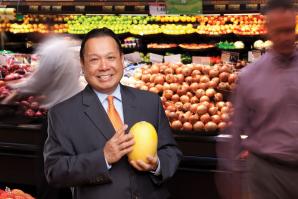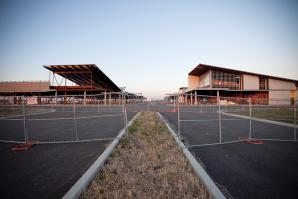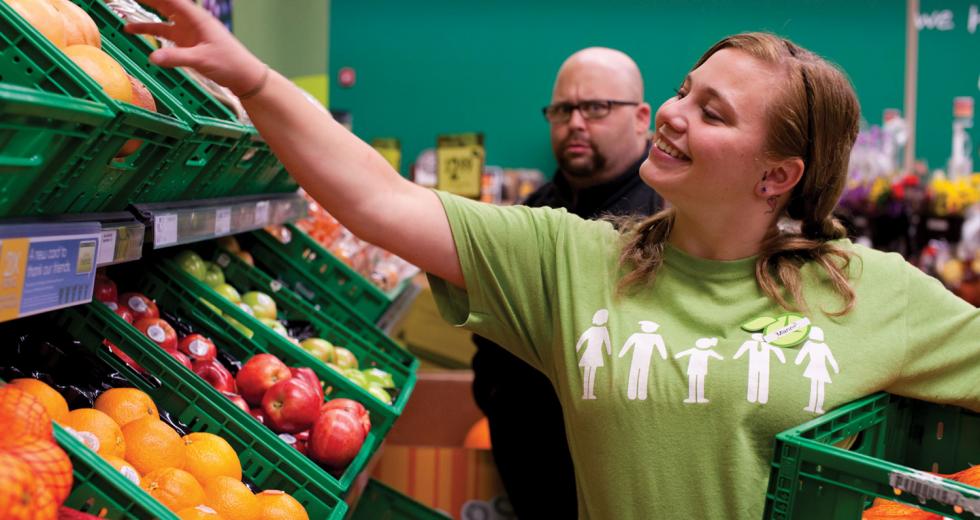With a new Vacaville store and six locations poised to open in the Sacramento area, Fresh & Easy Neighborhood Market Inc. is revving up competition in the already-crowded Northern California grocery scene.
A newcomer to this region, Fresh & Easy would be easy to dismiss as a small fish in a big pond of established local companies, including the Raley’s Family of Fine Stores, Safeway Inc., Whole Foods Market IP and Nugget Markets. But Fresh & Easy has big backing: it’s the creation of Tesco PLC — the U.K. version of Wal-Mart and the fourth largest retail grocer worldwide.
“There is a major grocery war about to erupt. It’s going to be interesting to see how it plays out,” says Garrick Brown, director of retail research at Terranomics Retail Services, a brokerage firm in Sacramento.
For the past decade, the national grocery industry has changed
dramatically with the emergence of grocery sections inside
superstores like Wal-Mart and Target. But now, Wal-Mart is also
expanding into the targeted food market with specialty stores
posing direct competition to mid-sized chain stores like Raley’s
and Safeway. Examples include Wal-Mart Neighborhood Market, a
40,000-square-foot grocery store; Wal-Mart Express, a
15,000-square-foot shop with grocery staples; and Marketside, a
small community store focusing on freshly prepared meals, bakery
items and wines along with fresh produce.
In the Sacramento area, Wal-Mart has added grocery sections to
nine superstores and is rumored to be buying the Grocery Outlet
in Granite Bay for one of its Neighborhood Markets.
“I think Wal-Mart is a substantial threat. At 200,000 square feet, you could fit 20 Fresh & Easys in there,” says produce industry blogger Jim Prevor, who operates perishablepundit.com. “When they open, it takes a lot of business out of other stores,” he says.
Representatives for Wal-Mart declined comment for this story.
Meanwhile, traditional chain supermarkets have tried to stay
competitive but lack major distribution infrastructure, says
Christopher Catapano, president of Bridgesphere Strategic
Advisors, a San Francisco-based retail consulting firm.
“The national grocery chains weren’t built as national distributors,” he says. “They are a hodge-podge of regional supermarket acquisitions. That’s very different from something that is built to distribute product in all 50 states. Wal-Mart does this very well, and so does Target.”
According to National Retail Federation Stores magazine, Wal-Mart outsold the nation’s next biggest retailer, The Kroger Co., by $229 billion in 2010, for total estimated retail sales of $307 billion. In Sacramento, Kroger runs a Foods Co. and several Quik Stop convenience stores.
But on the trade publication’s annual list of the top 100
national retailers, California’s midsize grocers maintained their
strong presence.
Pleasanton-based Safeway Inc. finished 11th on the list with
$33.2 billion in estimated 2010 sales.
• Texas-based Whole Foods Market IP finished 38th with $8.7
billion.
• Monrovia-based Trader Joe’s ranked 55th with $6.8 billion in
sales.
• Modesto-based Save Mart Supermarkets came in at No. 70 with
$4.9 billion.
• West Sacramento-based Raley’s finished 93rd with an estimated
sales of $3.36 billion. Raley’s ranked 81st the prior year.
As for the financial health of the overall sector, an October report on U.S. retail by the credit rating firm Standard & Poor’s found strong overall performance but noted an upcoming rise in food inflation may disrupt those results.
“We also believe that price competition may increase as inflationary pressure overlays tepid economic growth and sustained high unemployment. Therefore, we expect that there will be greater margin contraction,” wrote the report’s authors. “A strong operator such as Kroger Co., with good pricing and customer loyalty strategies as well as strong in-store execution, should have good sales gains, but this may not flow fully to the bottom line.”
As for the impact of big-box competitors opening small specialty stores like Fresh & Easy, Standard & Poor’s analyst Charles Pinson-Rose says he doesn’t see much competition to established chain grocers.
Given their long history, places like Safeway and Raley’s are typically in well-positioned locations, he says. Also, they often have added amenities like in-store pharmacies and banks, which gives them an edge on the superstores, even if a unionized work force and smaller distribution infrastructure slightly drive up their prices.
“Being a one-stop shop and having better service in stores and having a convenient location allows you to charge a slightly higher price,” he says.
Pinson-Rose adds that the national trend in healthier eating has helped high-end grocers like Whole Foods and Nugget Market Inc. hold their ground. Both offer full-service gourmet foods, bakery counters and specialty goods that are typically more expensive and unavailable elsewhere. That leaves Fresh & Easy toe to toe with midsize chain stores.
At 10,000 square feet, Fresh & Easy markets are a third the size of a Safeway or Raley’s, and easy-to-navigate aisles are laden with private-label products and pre-made meals of every ethnic persuasion. National brands make up less than 50 percent of their inventory.
Tesco has already started a marketing campaign to lure their customers away from stores with similar offerings by promising better prices. In a direct attack on Whole Foods, one of the company’s slogans is “wholesome food, not whole paycheck.”
“Will Wal-Mart’s low prices or Fresh & Easy’s convenience be enough to steal the market share from the guys in the middle? I think so,” Brown says.
Then again, it’s important to note that Fresh & Easy’s U.S. venture has so far operated at a loss. In 2010, Tesco lost $260 million on its U.S venture. And Fresh & Easy landed $112 million in the red the first half of fiscal year 2011, ending Aug. 27.
“It has been no secret that there have been challenges in our rollout, especially given the global recession and its impact on California, Arizona and Nevada,” says Brendan Wonnacott, the stores’ corporate affairs director. “Many communities stopped building, and several retail developments were put on hold. We took the responsible route and slowed the pace of our openings.”
In 2008 Tesco announced plans to open 18 Fresh & Easy stores in the Sacramento area, but scaled back those plans when the recession hit Northern California. There is now one Fresh & Easy operating in Vacaville that opened in March, and the company intends to open six more in 2012. Fresh & Easy also opened 13 stores in the Bay Area this year.
Officials from Raley’s, Trader Joes and Whole Foods Market all declined comment for this story.
To excel past those established outlets, Fresh & Easy needs to focus on strategic locations, Brown says.
“They will do best in urban areas with young professionals, empty-nesters and single people,” Brown says. “Fresh & Easy will have a nice, unique mix with their prepared foods, but they better choose locations with easy, in-and-out access.”
Facing fierce competition, Fresh & Easy’s entrance into the Capital Region may eventually provide insight as to whether the company will survive its U.S. venture.
“For Tesco, this is a big game,” says Catapano. “They care about
profitability and growth. If they can get it right, the U.S.
could be a very meaningful market for this company.”
Additional reporting by Allen Young
Recommended For You

A Grower’s Eye
Acuity with Ronald Fong
Ronald Fong, 52, has served as president and CEO of the California Growers Association since 2008. The CGA is a nonprofit, statewide trade association representing more than 500 retail members operating 6,000 food stores and 200 supply companies in California and Nevada.

Retail Rebound?
Elk Grove retail properties stabilize after two-year coma
Promenade Parkway is a lonely stretch of road south of Elk Grove. Behind a chain-link fence, a steel skeleton of what was supposed to be the city’s first mall with a Macy’s department store and a 16-screen theater sits in the shadow of developer General Growth Properties Inc.’s Chapter 11 bankruptcy negotiations.



